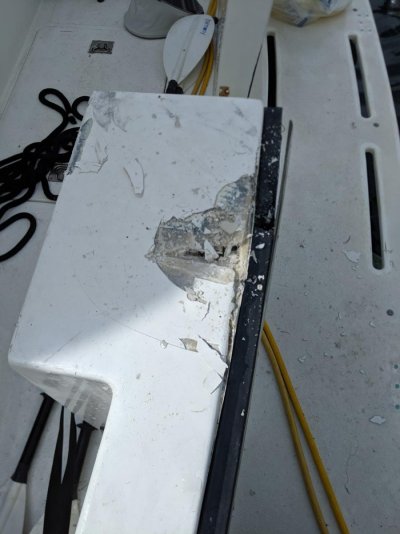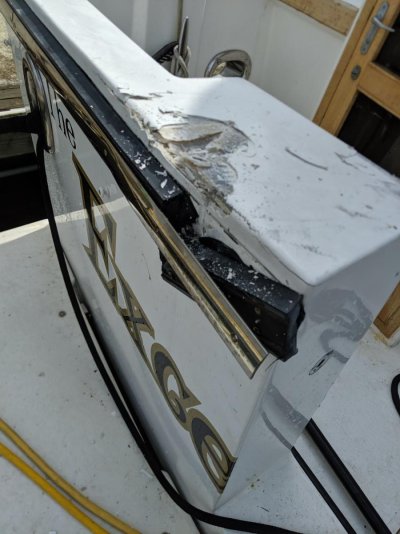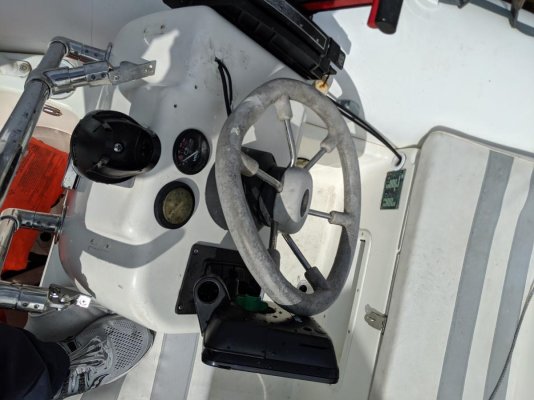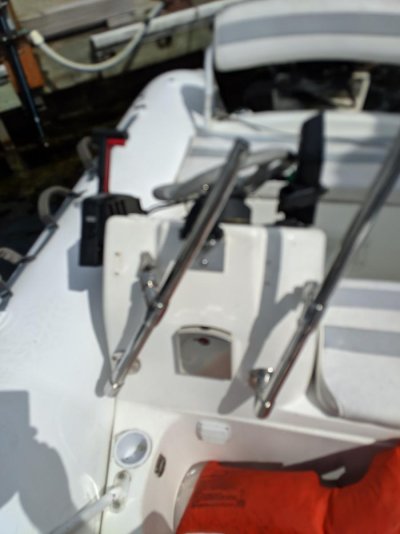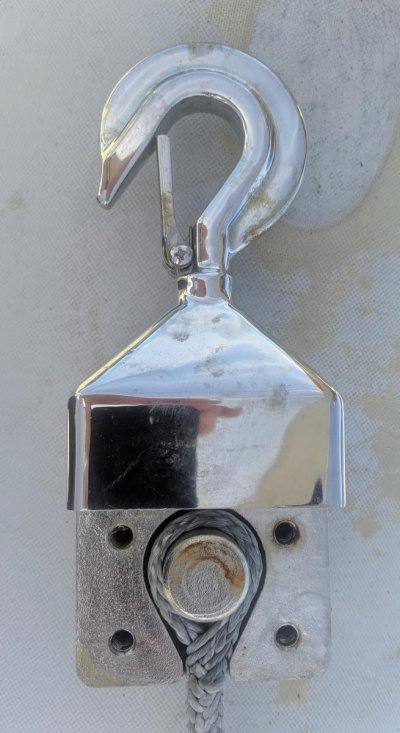wwestman
Senior Member
- Joined
- Apr 20, 2015
- Messages
- 395
- Location
- USA
- Vessel Name
- Excellent Adventure
- Vessel Make
- 1995 Jefferson Ker Shine 45
After doing some maintenance and cleaning up our tender, we were lifting it up to put it back on its chocks on the roof of the stern hardtop. Just as it reached the highest point and before we could swing it over, the lifting cable broke and dropped the tender bouncing it off the transom and into the water.
Things we did right: No one was underneath or near the tender. Numerous offers of help before the drop were graciously refused (since we had done this before without help) so there were only the two of us around and out of the way when it fell. Bottom line, no one was hurt.
Things we did wrong: Did not check the dyneema rope under the weight for chafe or rubbing. The rigger had put a knot in the dyneema and the weight rested on that knot. Best I can figure, since the line parted right above the knot, was that the weight had a rough spot and during previous usage had eroded the line. The weight went underwater so there is no chance to verify this. Next time no knot and the weight will clip onto the shackle on the end when needed.
Damage to transom and tender pretty extensive. Awaiting surveyor report and estimates. Will try and upload picture.
Bottom line.... don't stand under a load and never trust anything.
Things we did right: No one was underneath or near the tender. Numerous offers of help before the drop were graciously refused (since we had done this before without help) so there were only the two of us around and out of the way when it fell. Bottom line, no one was hurt.
Things we did wrong: Did not check the dyneema rope under the weight for chafe or rubbing. The rigger had put a knot in the dyneema and the weight rested on that knot. Best I can figure, since the line parted right above the knot, was that the weight had a rough spot and during previous usage had eroded the line. The weight went underwater so there is no chance to verify this. Next time no knot and the weight will clip onto the shackle on the end when needed.
Damage to transom and tender pretty extensive. Awaiting surveyor report and estimates. Will try and upload picture.
Bottom line.... don't stand under a load and never trust anything.

